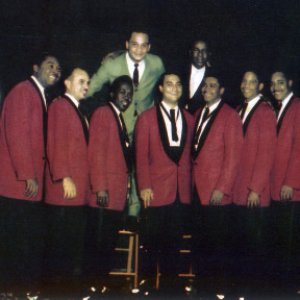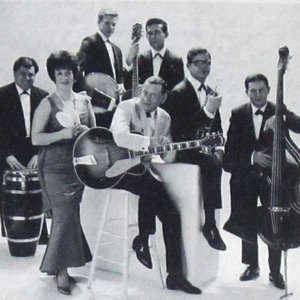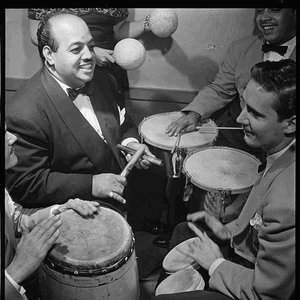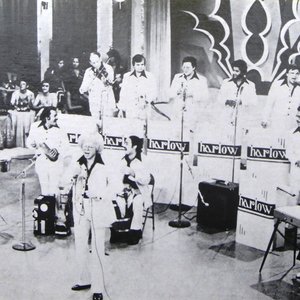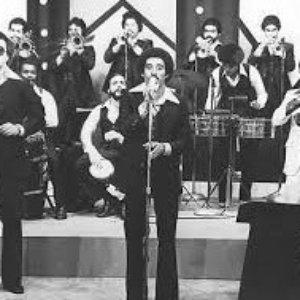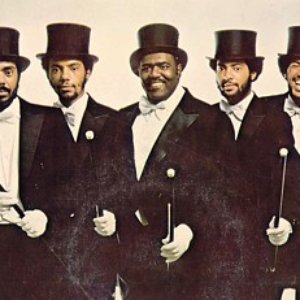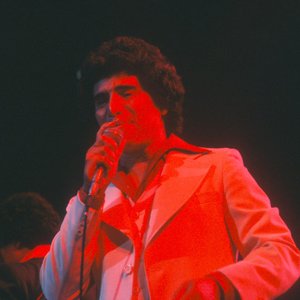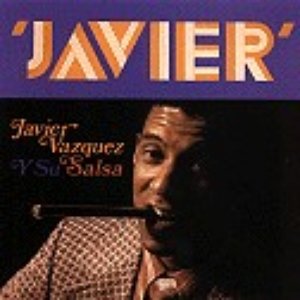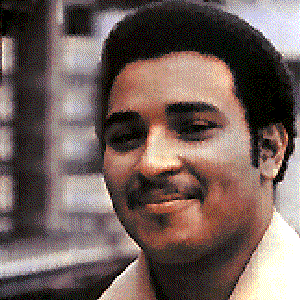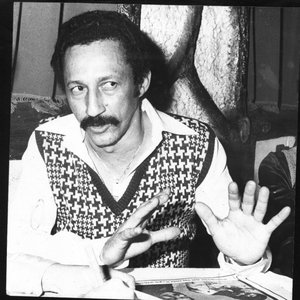Biography
-
Born
11 December 1928
-
Died
3 October 1982 (aged 53)
Rafael Cortijo
DATE OF BIRTH: December 11, 1928
PLACE OF BIRTH: Parada 21, Santurce, Puerto Rico
DEATH: October 3, 1982 in Santurce, Puerto Rico,
Rafael Cortijo was a Puerto Rican Percusionist, Composer, Director musician and orchestra leader.
In the dictionary of the Afroantillana music, the name of Rafael Cortijo is synonymous of legend. One of its figures summits and more venerated. Leader of one of the most admired rhythmic organizations during the second half of the 20th Century: Cortijo and Su Combo. Master of the Caribbean drum. Inspired by two generations of rumba and Puerto Rican cultists. This unrepeatable character, of very humble origin, was the son of Juan Cortijo Clemente and Juan Verdejo, who also procreated Francisco, Cecilia, Rosa and Gilberto. It counted 11 years when the trumpeter Paulino Flores introduced it to the fascinating universe of the Caribbean music teaching him elementary in the execution of the bongo. From now on, without a master, he learned to play the timbal, the tumbadoras - or congas - and some guitar chords.
At 14 he undertook its musical race joining, like bongosero, to the Joint Soustache Sisters (1943-1944). Later (1944-1947) it appeared in the Set Monterrey, of Monchito Muley and Juan Palm "Mentoquín". During the period 1947-1953 he worked alternately with the orchestras of Frank Wood, Armando Castro, Augusto Coen and Miguelito Miranda, as well as Sonora Boricua by Daniel Santos and the accompanying ensembles of Bobby Capó, Myrta Silva, Ruth Fernández and Miguelito Valdés, culminating that stage with the one directed by pianist Mario Román at La Riviera Night Club in Old San Juan.
In 1954 he founded the legendary orchestral ensemble Cortijo y Su Combo, forming a dumbbell with singer Ismael Rivera who, over seven years, caused a sensation throughout the Caribbean basin and Hispanic plazas of the United States. So brilliant was the trajectory of this collective that, of course, deserves separate chapter.
After starring alongside "El Sonero Mayor" that important chapter in the history of Afro-Argentine music, Rafael Cortijo continued his artistic activity in front of a new grouping. In several stages, almost always by requirements - or acceding to simple suggestions - of the record producers, he identified his band with different names. During its passage through Tico Records, for example, it was promoted as Cortijo and Su Bonche, although when making two reunions with the great "Maelo" on the albums "Welcome / Welcome!" (SLP-1140) in 1966 and "With all Irons "(LP-1158) in 1967, he took back the one that made him famous: Cortijo y Su Combo. Vocalists Lysedia Sanjurjo, Roberto Angleró, Luis «Che» Delgado and Vitín Meléndez appeared on their payroll during that luster. "Sorongo" (SLP-1170 - recorded in 1967); (SLP-1196) - with the excellent Panamanian sonero Camilo Azuquita and the Puerto Ricans Nacho Sanabria and Marvin Santiago (1969) - and "Pa 'los caseríos" (1970), would never lose their validity in The preference de los salseros de la mata.
Immediately after, he added to the catalog of Ansonia Records, whose catalog he paid two productions identifying with his original name: "Noche de temporal" (SALP-1476) in 1970 and "Cortijo y Su Combo, Vol. ) In 1971. However, in the interim he shared star credit with the no less prestigious percussionist Francisco "Kako" Bastar in another album that would reach classic category: "Rhythms and street songs" (SALP-1477), recorded in the studio Bellone , In Manhattan, on May 7, 1970. The most excellent Chivirico Dávila was in charge of the vocalizations.
Joining the label West Side Latino, by Arturo Sáiz, began to be sold as Rafael Cortijo and Su Orquesta. To this period belongs the album "Cortijo con Las Siete Potencias" (LP-2035), published in 1974, in which the talented sonero Junior Cordova stands out. The same year marks his debut album under the cover of the newly created label Coco Records, by Harvey Averne: "Together Again" (CLP-113), which marked his third reunion with Ismael Rivera and was recorded " Alive "during the concert that brought together members of the group that became famous - it would be wrong to call them" the originals "- at the Roberto Clemente Coliseum on June 25. Such a disc was published in August. From now on, the band was promoted briefly as Cortijo and La Máquina del Tiempo. They were his following productions: "Time Machine" (1974); "Campions" (1975) and "Iron Horse" (1977), whose musical direction fell to Charlie Palmieri. Already by then Fe Cortijo shone like its star singer.
His last two recordings were made in Puerto Rico, for although he spent extended periods in his homeland, until then his official center of operations was New York. The first is titled "El Sueño del Maestro" (Tierrazo, TLP-008), produced by Frank Ferrer in 1980. Fe Cortijo and Ismael Rivera, son, were the vocalists of this album, in which the group is presented as Rafael Cortijo And His Orchestra. It included the pieces "Elena, Elena" and "Drops of venom", which meant his last successes. In the second, "Cortijo bailable" (Velvet / Golden Stereo 6012), whose direction Ray Santos and Louie García shared, was once again Cortijo and Su Combo. It was published a few months before his death.
A victim of pancreatic cancer, Rafael cortijo Verdejo died in the home he shared with his sister Rosa, in apartment 313 of Building 15 in the Public Residential Luis Lloréns Torres, in Santurce, on October 3, 1982. His funeral, Cementerio de Villa Palmeras on the 6th, was an impressive demonstration of popular mourning: over 15,000 fans attended to give the last goodbye. Inspired by those emotional scenes, the novelist Edgardo Rodríguez Juliá wrote his acclaimed work "El Funerro de Cortijo" (1983). In addition to her adopted daughter and singer of her orchestra Fe Julia, she was survived by two biologicals: Rafael "Timbe" (born 1975) and Zoila Rosa (born 1976).
Partial and chronological list of the interpreters of his compositions -
Recorded by Cortijo and Su Combo in the voice of Ismael Rivera: "The goat of the bell" (Seeco, 1958); "Enter, woman" and "Sebastiana", guarachas (Mar-Vela, 1959); The full "Ramona" and the bomb "I am of the field" (Gema, 1960) and "Water that is going to fall" (Tico, 1976). In the voice of Roy Rosario: "Tie the chain" (Seeco, 1958).
With Kako, in the voice of Chivirico Dávila: "Compay Sapo", full (Ansonia, 1970).
With his orchestra in voices by Fe Cortijo and Ismael Rivera, son: "Cirilo Sánchez" and "Drops of poison" (Tierrazo, 1980).
Carlos Montiel: "La bomba" (Adria, 1960).
Super Combo Caracas: "Sebastiana" and "Compay Sapo" (Karibe, 1974).
Ismael Rivera & Los Cachimbos: "To dance my bomb" (Tico, 1980).
Marvin Santiago: "To the sound of the tin dances the chorizo" (TH, 1980).
Ismael Rivera, son: "Bambulé" (Sony Music, 1991).
The Children of the Sauce: "I am from the countryside" (LHS, 1985).
Rev 12-nov-07
Artist descriptions on Last.fm are editable by everyone. Feel free to contribute!
All user-contributed text on this page is available under the Creative Commons Attribution-ShareAlike License; additional terms may apply.

